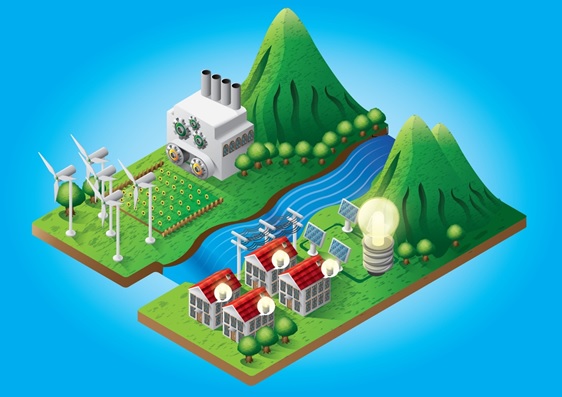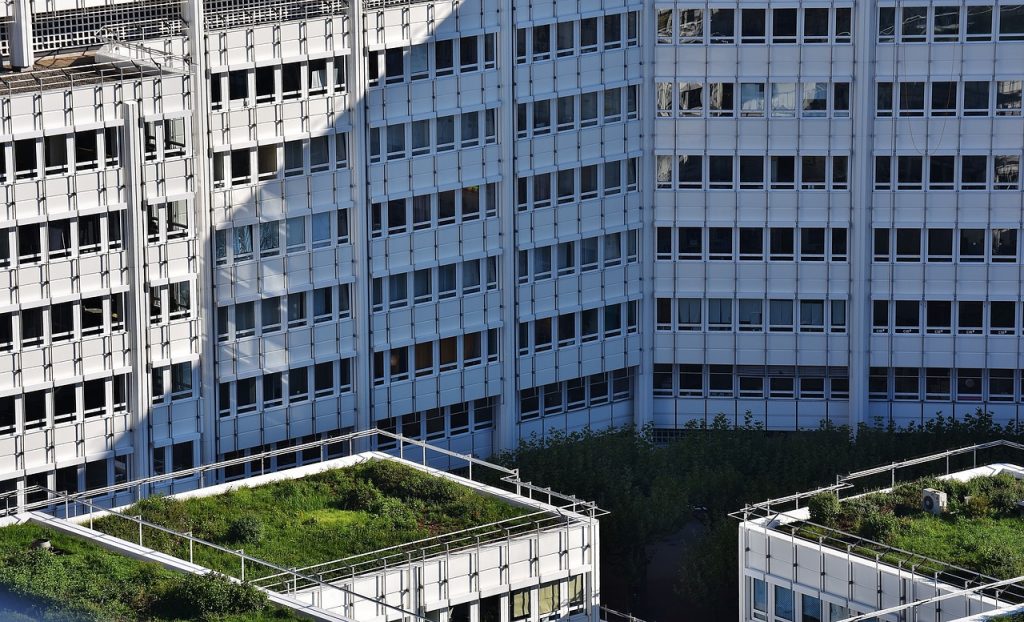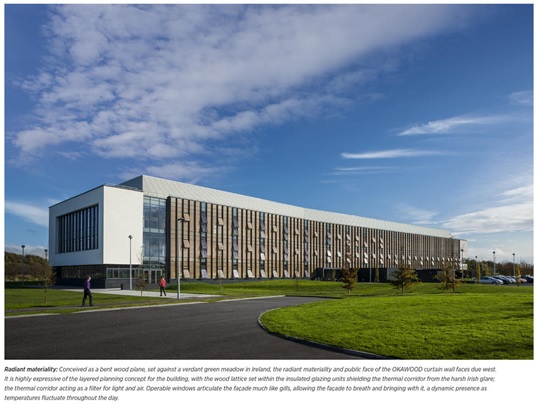Owning the perfectly designed and constructed house is a dream of many amongst us. The increase in demand of houses has led to a greater need of better infrastructure, more land, and energy. It is in this context that the concept of Sustainability gains importance. As per the World Commission on Environment and Development, Sustainability is “meeting the needs of the present without compromising the ability of future generations to meet their needs”. This principle is now being implemented by architects, builders and designers all over the world. This has given rise to the concept of “Sustainable Architecture”.

What is the need of sustainable architecture?
Sustainable or “Green” Architecture is an emerging trend in the design and construction industry. It involves the use and implementation of environment friendly materials in construction. Gauging by the current speed at which energy and other fossil fuels are being guzzled up by buildings, office spaces, houses and other structural edifices, it is not far before there is a severe scarcity. Sustainability is thus not a luxury but the need of the hour.

Eco Friendly Materials
The concept of Sustainable Architecture has taken birth on the chief idea of reservation and restoration. When it comes to putting a structure in place, the first foot forward would be the design. To ensure that a structure consumes the least amount of energy resources, it is of utmost importance to have a “green” strategy in mind. In the designing phase, it is necessary to envision the entire life span of the building right until the stage of re-use. Is the design of the building flexible enough to allow multiple uses? Can the building be easily demounted with minimum harm to the environment? Can the materials employed therein be re-used effectively? These are some of the questions to be given a thought on before a green building is constructed.
As mentioned earlier, an ideal design should involve a maximum of use re-claimable materials. Further, the structure should be aligned such that it can easily tap onto the sun and the wind. At this point, the selection of the project site should also be given due importance
Energy conservation
Next in line, one must focus on the consumption of energy during and after the completion of construction. Insulation envelopes help in ensuring that there are minimalistic cold bridges and that the external environment remains airtight. The buildings should be designed such that they effectively catch on to the passive rays of the sun without getting overheated. Daylight capturing and efficient air cooling outlets also help in maintaining a healthy atmosphere within the buildings,
Furthermore, it becomes extremely crucial to use the right materials while constructing eco-friendly structures. The concept of “Reduce, Reuse and Recycle”, the use of natural materials can go a long way. Efforts must be taken to use supplies such as natural paints and dyes, responsibly harvested wood and nontoxic and non-synthetic resources in construction.
A good example is Green roofs which can be installed on the house containing a rooftop garden. To build a green roof, one needs to lay down a few water proof barriers, some drainage material, a layer of soil and plants. While the plants help in insulating and filtering rain water, the soil in combination with the greens can aid in lowering the temperature indoors.
Renewable Energy and Resources
Moving from traditional energy sources to renewable energy is one of the key aspects of sustainable architecture. It is not only beneficial for the environment, but can also be cost effective in the long term for consumers
- Solar Panels: An effective and popular tool in capturing solar energy are solar panels. These panels are aid primarily on top of the roof or as a standalone structure near the building. They often integrate themselves right into the roof, without interfering in the décor.

- Rain water harvesting systems – Rain water conservators are primarily used in houses to capture natural water that can further be used. Unlike plastic barrels that were used earlier, rain water harvesting systems are now offered in many attractive options. A major part of these systems can also be built underground without meddling with your landscapes.
- Solar Water Heater – One of the most popular renewable energy implementations is Solar Water Heater. Solar Water Heaters are popular in tropical countries with enough sunlight, but can practically used anywhere. They contain a solar heat collector and a tank for water storage. Solar water heaters can save considerable costs required for heating water using conventional methods.
Global Examples
With constant upgrades in the technology, sustainable designs can be aesthetically sound and appealing at the same time.
Understanding the essential need for Sustainable Architecture, countries all over the world are now using techniques in support of nature and mankind as a whole. Some of these mind boggling structures include the likes of the Biosciences Research Building (BRB) in Ireland, the Exploratorium in California and the Rene Cazenave Apartments in San Francisco. The design of the BRB uses low-load spaces, optimal ventilating and conditioning strategies and techniques of radiant heating that enable it to cut down on mechanical sources of ventilation up to 45 percent. On the other hand, the Exploratorium wins brownies for an excellent use of natural lighting. The Rene Cazenave Apartments are a good example of a fine incorporation of filtered ventilation, solar canopies and an insulated rain- screen.
 Biosciences Research Building, Ireland Image Source – http://www.aiatopten.org/node/517
Biosciences Research Building, Ireland Image Source – http://www.aiatopten.org/node/517
Sustainable architecture in India
On the path of Sustainability, India is also progressing fast with many energy efficient initiatives. Some examples include the CRISIL House in Mumbai, the ITC green center in Gurgaon, the Infosys and CII building in Hyderabad and many more “Green” structures. These buildings involve the use of HVAC designs, VOC paints, efficient waste management systems and recyclable materials.
 CRISIL House, Mumbai
CRISIL House, Mumbai
It is our principal responsibility to use (resources) judiciously and to build (constructions) reasonably. To sum it up, Sustainable Architecture can show us the path towards the future of global construction and environmental sustainability.